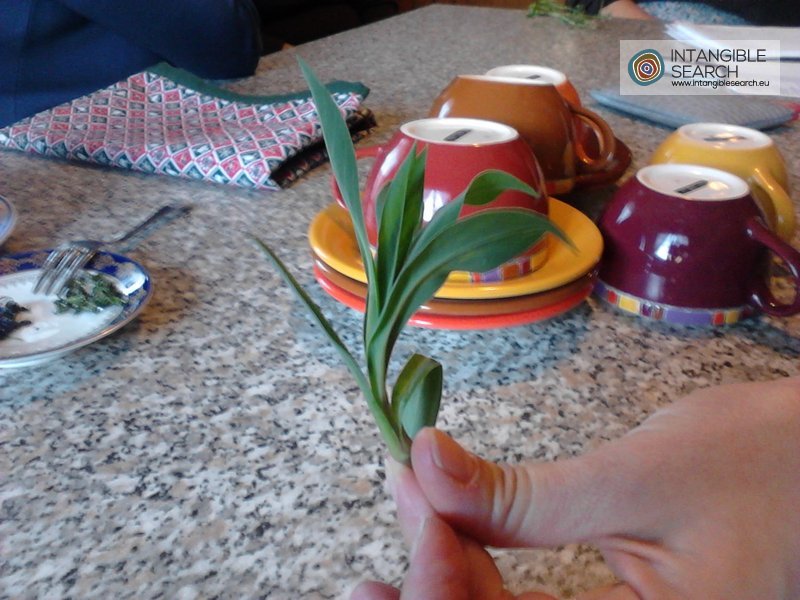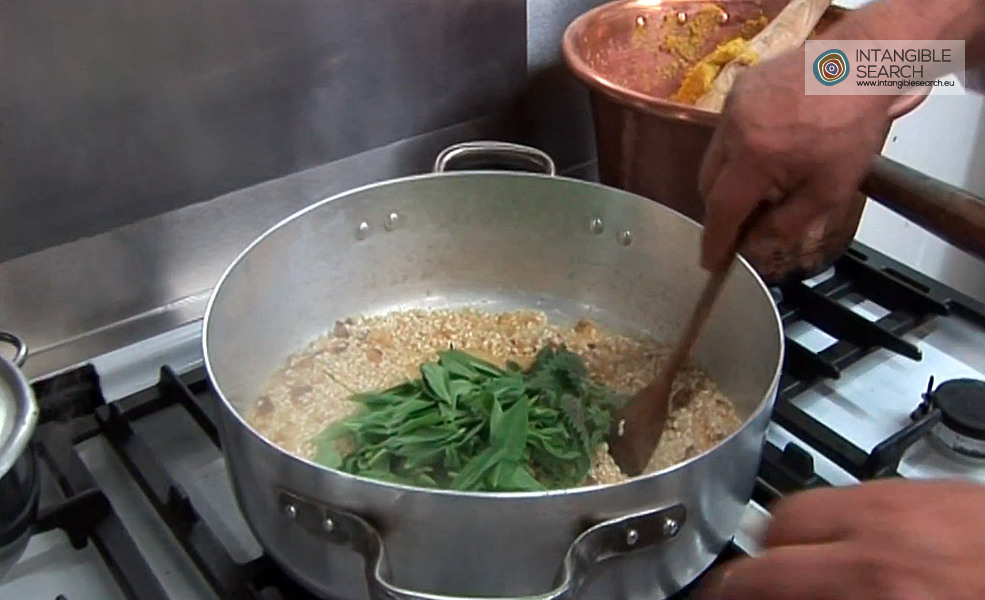Harvest and use of susei in Valchiavenna
(Susei)
Dialect name: susei (sing.: suseł) and sciuscei
Scientific name: silene vulgaris.
From the point of view of the terminology, susei have a peculiar feature, which has been rarely encountered in Chiavenna. In fact, apart from experts, those who usually use susei, are not able to provide a translation into Italian of the dialect name but, in order to give them a category name, even though this term is not totally shared and agreed on, we can say that susei are silene vulgaris.
For food purposes - at home and in restaurants - the leaves of the apical part are used, as you do with nettles. The leaves can be eaten as a side dish (pan-fried) or as an ingredient in the preparation of soups, risottos, salads and frittatas.
The period to harvest these plants is from April to September.
Susei can be preserved by freezing, although many of those who employ them prefer to use only the fresh product.
First of all susei are main ingredients in soups, accompanied by rice and/ or by different combination of the following ingredients: nettles, cuckoo bread (rumex acetosella), vanga (goosefoot) or wild spinach (chenopodium bonus-henricus), dandelions, potatoes and chestnuts diluted with water and/ or milk. Secondly susei can make risottos very special. This recipe is often proposed by local restaurateurs as a typical wild herbs special dish. The susei appear also in frittatas, mixed with eggs, parmesan cheese and sometimes ricotta cheese (soft white Italian cheese). Finally susei can be eaten as a side dish: first they are parboiled, then they are pan-fried with butter, as chefs do with wild spinach and dandelions. The cooking time depends on the harvest period: from half a minute for tender plants harvested in spring, at the beginning of their growth cycle, up to 3-4 minutes for the more ripped ones harvested in late summer.
As concerns non-food uses, susei flowers are crushed by children to produce the characteristic crackling sound.
Some criticisms that have raised about the concept of 'spontaneous herb' can be applied to the Rampion Bellflower as well. Classification problems are hence a consequence. Although informers do not hesitate to define spontaneous or a wild plant, plants such as wild fennel, the Rampion Bellflower ,the wild thyme and susei themselves, it should be noted that they are often sown or transplanted in vegetable patches/ home gardens. This domestication allows to have them always available for food or phytotherapic uses and other daily necessities. Their inclusion in vegetable plots/ home gardens, however, does not affect the attribution of the adjective 'spontaneous' or 'wild' to these plants by experts. For this reason, even knowing that the analysis of practices undermines the dichotomy wild/domestic, it was decided to adopt the concept of 'spontaneous' or 'wild', according to local practice.
LEARNING AND TRANSMISSION
It is necessary to distinguish between learning and transmission of knowledge in youth and consolidation of knowledge in adulthood.
The people interviewed recall how in their youth they learned by practice experience, informally, through the example of parents or other adults. Children and young people followed the harvester and listened to their possible explanations on how to collect the plant.
Even the recipes developed from plants collected were transmitted orally, and learning was direct and based on observation and practice. Not only the native family but also the acquired one contributed to enrich the repertoire of culinary preparations: harvesters often cite the mother-in-law, along with her mother, as a major source of their knowledge.
In adulthood the knowledge are consolidated also by reading specific texts on plants, in particular the volume of Maria Treben, La salute dalla farmacia del Signore: consigli ed esperienze con le erbe medicinali, and by attending herbal medicine courses.
It should also be noted that the interviews conducted for this research have been themselves a moment of transmission of knowledge: the participation in the meetings of people of different generations allowed more young people to discover the properties of the plants, recipes, anecdotes about the harvesting and so on that the older had never had occasion to tell.
People interviewed on the future are rather pessimistic: children, they explain, are reluctant to go to harvest wild plants and prefer to make use of the market products. As explained by one of the older respondents: "I've had five I [of children] but nobody was interested. Now people find it easier to go to the pharmacy, take a pill or a syrup, they do not give the right importance to things homegrown."
PROMOTIONAL ACTIONS
A way to enhance susei (silene vulgaris) as other "wild" or "spontaneous" plants of Valchiavenna is represented by their use in a cooking context which goes beyond the domestic walls: restaurateurs of the area, especially those who run a farm house serving meals, but also regular restaurants, offer recipes based on wild herbs in order to promote the use of local products.
Related Intangible Heritage
Harvest and use of dandelion in Valchiavenna
Harvest and use of wild garlic in Valchiavenna
To learn more
Produced by
Università Statale di Milano - Dipartimento di Geografia e Scienze Umane dell'Ambiente - Gaetano Mangiameli Cristiana Natali
Release Date
14-NOV-2013 (Gaetano Mangiameli Cristiana Natali)
Last update
21-NOV-2013
TweetFrom Community
Tell us about it





